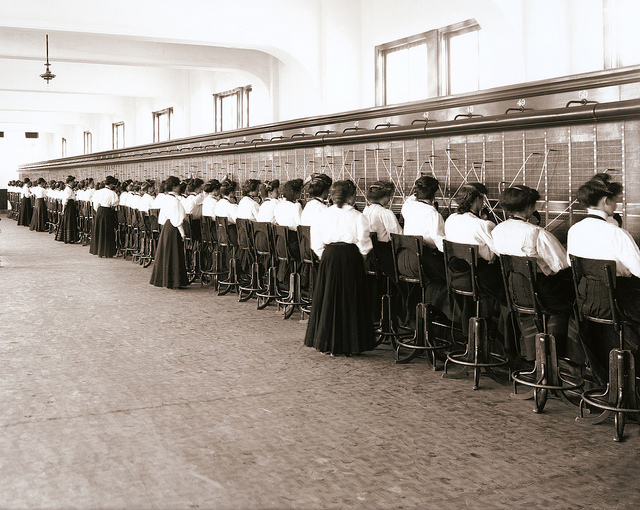This article was written by Box Chief Executive Officer, Aaron Levie, and XSeed Capital Partner, Robert Siegel, and originally appeared on TechCrunch.
Ford made headlines at CES this week when it announced a major partnership that will integrate Amazon’s technology into its cars, also following rumors that the company is working with Google to develop and manufacture self-driving cars.
Even a couple of years ago, these combinations would have seemed shockingly strange, but today the only thing remotely surprising is that it took so long. Ford, to its credit, is barreling into a digital future with a Silicon Valley innovation lab, self-driving car investments, car sharing programs, and more.
After surviving world wars, tectonic shifts in the economy, onslaughts from foreign competitors, and more, Ford knows all too well how difficult survival is in the Fortune 500.
Since the first rankings of the Fortune 500 was published in 1955, a whopping 89% of the list has turned over. That’s astonishing: in less than one lifetime, the dominant players in the global economy have almost completely changed.
Technologically speaking, 1955 and most of the decades since, were the dark ages. Today, clever entrepreneurs are benefited by the increased ability to use the power of emerging technologies and shifting capital markets to disrupt any business – and every business – quicker than ever before. With billions of smartphones, near-limitless computing power available on-demand, and contract manufacturing, the same forces that have shaken up the technology industry are causing upheaval for every other industry as well.
It is hard to think of an industry that is not under attack. Media, retail, life sciences, healthcare, transportation, hospitality and agriculture are all under siege by new products that blur the boundaries of the physical and virtual. And these new digital experiences are inspiring customers to put major pressure on established analog peers.
Most traditional players are not prepared to answer these calls. Slowed by heavy regulation, years of codified processes and aging technology, incumbents are burdened to the point where it is nearly impossible to move quickly enough against an unencumbered challenger.
This is the Industrialist’s Dilemma: the systems, management and assets that led to success in the industrial era are holding incumbents back today, in some cases fatally.
As we learned with the Innovator’s Dilemma, new forms of disruption make it hard for managers in existing businesses to respond gracefully to these attacks; however, today we see that the move from the industrial world to a digital one is far more of a nonlinear shift than most even the most innovative incumbents are used to.
It’s one thing for a car company to react to a more reliable or more affordable car marker, as US automakers dealt with in the 1970’s. It’s another to respond to the very threat of car ownership going away forever, or the challenge that making self-driving cars requires a fundamentally different skill-set from what you’ve invested in over a century.
So what can the established players do?
Out of fear, or denial, most will choose to sit back and wait until the shift is so profound that their moves become as limited as the taxi industry’s are today. The rare exception in the Fortune 500, however, will employ a mix of tech acquisitions, investments in startups, building out talent and operations in Silicon Valley, and driving partnerships to transform their companies.
Ford is hedging their bets by developing self-driving car technology directly and partnering with Amazon and potentially Google, while considering the business model implications of a world where cars are managed in fleets, not parked in our garage. Charles Schwab is taking a hint from automated online advisers like Wealthfront and FutureAdvisor, attempting to leverage its customer relationships to stave off an attack, while also enter a new market it never served previously. And Kaiser, realizing that providing virtual care lowers its costs and offers better convenience for patience, has built out an own array of technology and invests in startups to bring personalized, digital healthcare to life.
Ultimately, no two digital strategies are the same, but all must start with the incumbent’s core competency at the center of the effort.

World’s Fair – General Electric “Progressland”. Photo courtesy Flickr and Roger W.
For years, GE has been one of the best examples of an industrial giant that’s going digital. Recognizing earlier than most that in a connected world, through the crunching of big data and constant optimization of its services, GE can move to providing solutions as opposed to products (e.g. selling energy savings vs. wind turbines).
To get there, they needed each of their business units to think like a digital business, as well as build out a centralized software and computing effort to standardize approaches across the conglomerate. Today, their successful software efforts have led them to going on the offensive in the internet of things, launching GE Digital as a standalone unit with the goal of becoming a top-10 software company by revenue by 2020.
The retail industry offers emerging examples of brick-and-mortar players using partnerships with startups to turn a former weakness into a weapon. With online commerce offering infinite selection at unbeatable prices –enabled by centralized warehouses instead of thousands of locations– it looked as if nearly every retailer was doomed to face the same fate as Borders or Blockbuster going against Amazon.
But as more consumers are getting hooked on on-demand experiences, physical retailers may have the upper hand, as they are able to deliver both online and offline shopping which offers better convenience than their online-only rivals.
To get there, a plethora of on-demand delivery partnerships are being struck between the likes of Walgreens, Best Buy, Starbucks, 7-Eleven and Postmates, DoorDash, and Deliv, with Uber expected to get in the ring soon.
In many cases, M&A will be the industrialist’s fastest path to the right digital experiences.
Monsanto, Nordstrom, and Under Armour have acquired their way into digital expertise, buying would-be disruptors and incorporating their capabilities into their core businesses. Startups like Climate Corporation, Trunk Club, and MyFitnessPal have given these acquirers an edge in emerging categories, bringing in fresh talent, modern technology stacks, and new business models.
While acquisitions turbocharge entry into a new market, retaining the talent and DNA that made the startup so effective becomes the most important task for sustained innovation.
With over $1.4 trillion sitting on the balance sheets of the S&P 500, and demand for liquidity among venture capitalists, we can expect the industrialists to become far bigger acquirers in the tech world over the coming years, perhaps even outpacing traditional technology companies in tech M&A.

Telephone switchboard operators circa 1914. Photo courtesy Flickr and reynermedia.
Of course, none of these efforts will matter if organizational change, and significant shifts in how the companies are run, don’t accompany them. It is not enough to have the right products and technology, as those will only solve the problem for a single point in time.
Organizations themselves need to adapt to ensure long-term competitiveness and innovation. The ability to separate the organizational structures and cultural dynamics that were developed for slower, industrial-age processes (like manufacturing) from the fast moving ones required for more digital-based experiences will be critical.
Just as Tesla can both build cars at scale and update them with regular software upgrades – two very different operational paradigms and capabilities – companies will also need to learn how to evolve to flex both of these traits.
Most incumbents outside of the technology world (and many within it) are not prepared for this kind of future, and every day that goes by reduces their ability to adapt in time.
The coming years will be crucial for any blue chip firm looking to keep its leadership spot. Consumers are not going to accept friction in their retail experiences when Amazon is an alternative. Banks will have to contend with increased choices and a world where their physical sprawl matters little to consumers. And owning cars may very well be a thing of the past if Google and Uber have their way.
The future is going to look very different; the only question is how the Industrialists will respond.
